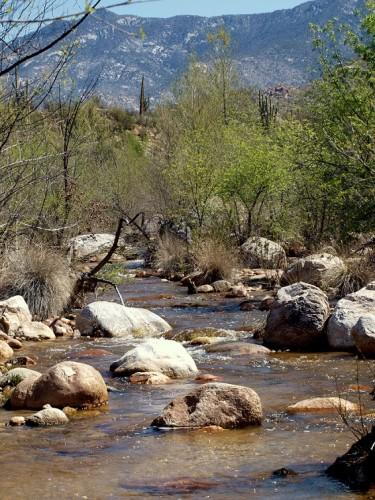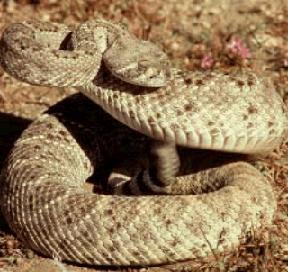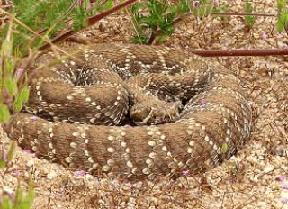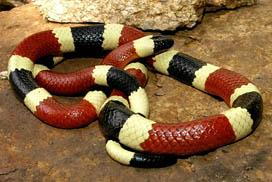
With the weather beginning to warm in the El Paso area the great outdoors begins to call us out of our winter homes to get a little sun. But we are not the only ones being called out, so is all of nature. We must keep this in mind as we begin to venture out with fury friends to go on a camping trip or even just a hike.
Snakes are a natural and integral part to the ecosystem. They have an invaluable role in maintaining populations of their prey. Their prey can consist in everything from earthworms to rabbits and even other snakes, and they are especially important in the control of rodents.
Just the word snake can make some people jump. They have always been the objects of fascination or fear and suspicion since ancient times. They nevertheless have a key role to play in the balance of nature.
Snakes are ectothermic, or "cold-blooded", meaning their body temperature varies with that of the external environment. Being ectothermic makes them sensitive to both very cold and very hot temperatures. They will normally hibernate in the winter by burrowing deep below the ground and begin to emerge from their dens in late February to March in Texas. To warm themselves, snakes will bask in the sun or lie on a paved road at night. They will also avoid extreme hot conditions by restricting their activity to early morning, evenings, and night time. Snakes tend to be shy and most live a non-migratory life with most of their behavior being a function of survival.
The most common venomous snakes found in the El Paso area are: Western Diamondback Rattlesnake, Rock Rattlesnake, Mohave Rattlesnake, Black Tailed Rattlesnake, Prairie Rattlesnake and Massasauga. In other areas of Texas, Copperheads, Cottonmouths (water moccasins) and Coral snakes are frequently encountered.




western diamondback mohave rattlesnake Coral Snake snake on the road
Most of these fall into the "pit-viper" class. They have long, hinged, tubular fangs with which they strike, inject venom (a voluntary action), and withdraw. The venom from these types of snakes (except the Mohave Rattlesnake) are hemotoxic, necrotizing and anticoagulant. This means the venom will disrupt the integrity of the blood vessels leading to an often dramatic swelling. Up to one-third of the total blood circulation can be lost into the tissues within a matter of hours leading to severe hypotension. The toxin further disrupts normal blood clotting mechanisms leading to uncontrolled bleeding. This kind of blood loss induces shock and finally death. Facial bites can often be more lethal if swelling closes the throat or impairs the ability to breathe. 
How serious a bite is depends upon the species and age of the snake and the size of the dog. If your pet is bitten by a snake, it is best to assume it is a venomous bite.
What to do:
-
Muzzle your pet to avoid being bitten--snakebites can be extremely painful and your pet may try to protect itself. -
Immobilize the area that has been bitten if it can be safely done and keep this area, if possible, below the level of the heart. -
Keep calm and carry your pet if necessary -
SEEK VETERINARY ATTENTION AS SOON AS POSSIBLE -
Try to identify the snake if it can be done without risk. DO NOT ATTEMPT TO CAPTURE OR KILL THE SNAKE. -
DO NOT BRING THE SNAKE INTO THE VETERINARY CLINIC. A picture will do.
What NOT to do:
-
Do not cut over the fang marks. This will cause more tissue trauma and is not going to help the patient. -
Do not allow your pet to move about freely -
Do not ice pack or tourniquet the area as this can lead to more tissue damage and delayed time in seeking veterinary attention.
Our treatment strategy will be directed toward preventing or controlling shock, neutralizing venom, preventing or controlling coagulopathy, minimizing tissue necrosis (damage), and preventing secondary infections. Time is of the essence and intensive therapy should be instituted as soon as possible. Do not delay. A quick response on the owner's part improves the prognosis.
Keeping your pet close to you on your hike or trip is the best way to avoid an encounter with a snake.
A "snake-bite" vaccination has been created to help delay the toxic effects of envenomation should it occur. It helps the body to develop antibodies (little fighting men from the immune system) against the venom of the Western Diamondback. This vaccination has also shown to be protective against the venom of other rattlesnakes. There has also been good cross-protection against numerous other venomous snakes as well.
If you plan on traveling this spring and summer to outdoor areas where your dog may encounter a venomous snake we would be happy to discuss whether the vaccination would be right for you.
Dr. Martinez
